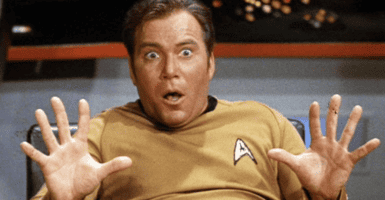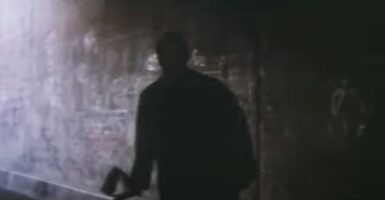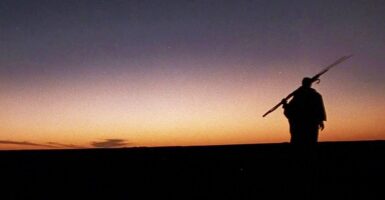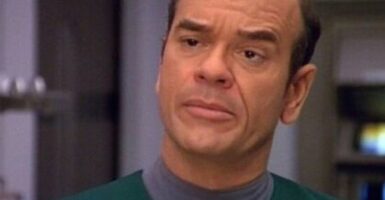Alien Screenwriter Dan O’Bannon Originally Imagined Very Different Xenomorphs
This article is more than 2 years old
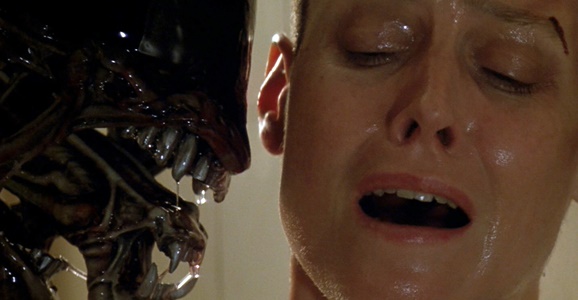 The so-called “xenomorphs” of the Alien franchise are easily one of the most terrifying creations even to grace the movie screen. Cooked up in collaboration with Swiss surrealist artist and all-around weirdo H.R. Giger, the xenomorphs are every body-horror nightmare you can think of, blended together into a perfect killing machine that, if you’re lucky, will tear you apart instead of deciding to cocoon you as host for a chestburster. But it turns out that Alien screenwriter Dan O’Bannon’s ideas about the nature and culture of the xenomorphs were very, very different from how they have been developed in the films that followed.
The so-called “xenomorphs” of the Alien franchise are easily one of the most terrifying creations even to grace the movie screen. Cooked up in collaboration with Swiss surrealist artist and all-around weirdo H.R. Giger, the xenomorphs are every body-horror nightmare you can think of, blended together into a perfect killing machine that, if you’re lucky, will tear you apart instead of deciding to cocoon you as host for a chestburster. But it turns out that Alien screenwriter Dan O’Bannon’s ideas about the nature and culture of the xenomorphs were very, very different from how they have been developed in the films that followed.
We all know the life-cycle of the xenomorphs from the films. They begin as leathery eggs, waiting patiently until an organic being gets close enough, then boom, a facehugger pops out and drops an embryo down your throat. After a while the facehugger drops off, you seem fine for a while, and then a tiny chestburster bites and tears and claws its way out of your chest cavity. Off it scampers to grow into a full warrior drone or, occasionally, a queen. In O’Bannon’s original conception of the aliens, things start out the same way, but after the chestburster, we get something else entirely.
Back in 1980 The Thinking Cap Company published a book called Alien Portfolio of Crew Insignias. Included with the limited edition of that book was an eight-page booklet in which concept artist Rob Cobb explains what Cobb originally intended for the xenomorphs. For one thing, they were native to LV-426, the moon where the crew of the Nostromo first encounters them. The eggs would typically be housed inside a pyramid-like structure, rather than the derelict alien vessel of the finished film (which was eventually established by Prometheus to be a ship of the mysterious, world-seeding Engineers (originally nicknamed “Space Jockeys”). Inside this pyramid temple, the facehuggers would infect “lower animals,” the equivalent of cows, and would eventually hatch into the small chestbursters. And here’s where things take an unexpected turn. Cobb recalled:
This creature, the chest-burster, is the Alien’s second stage, and it simply runs about eating, mindlessly carnivorous. At this stage the creature is still controlled and nurtured by adult Aliens, until the chest-burster begins losing appendages and becomes more and more harmless. Finally, its bloodlust gone, the Alien becomes a mild, intelligent creature, capable of art and architecture, which lives a full, scholarly life of 200 years.
Yeah. “Mild” and “intelligent” are not words you would easily associate with the xenomorphs that slaughter their way across the Alien franchise. Much less the notion of them having art or architecture. The closest we’ve seen to that is the carved murals depicting the xenomorph life cycles in the Engineer seen in Prometheus.
In O’Bannon’s backstory, eventually some sort of calamity wiped out all the adult members of the xenomorph species, leaving behind only the dormant eggs. Some time later, the Space Jockeys/Engineers discovers the planetoid and the temple. A careless Jocket gets facehugged, but when he’s rescued, just like the crew of the Nostromo, the Space Jockeys don’t have a clue what they’re up against. Cobb continued:
When the chest-burster erupts from the Jockey it goes on a killing rampage until it is shot and killed. The Alien dies, but immediately decomposes and its acid eats through the hull of the Jockey’s ship, leaving them stranded on the planet. The Jockeys radio a message that there is a dangerous parasite on the planet, that nothing can be done to save them in time and that no one should attempt a rescue. Then the Jockeys slowly starve to death. Eventually, the Nostromo picks up the signal and, not knowing it’s a warning, lands and starts the whole thing again.
It’s quite a departure from the story we eventually learned, where the xenomorphs were the creation of the Engineers — although the true motives or goals behind are still murky. But in O’Bannon’s vision of the Alien world, none of the trouble ever would have happened if only one of the grown-up xenomorphs had been around to apologize for the whole chestbursting thing and keep the newborn in line. All told, I think we lucked out with the more horrifying version of the creatures, but this still makes for a fascinating slice of science fiction history.









